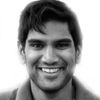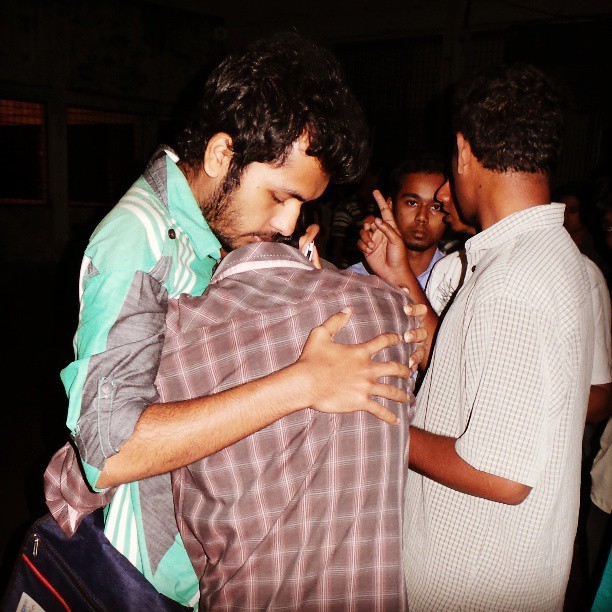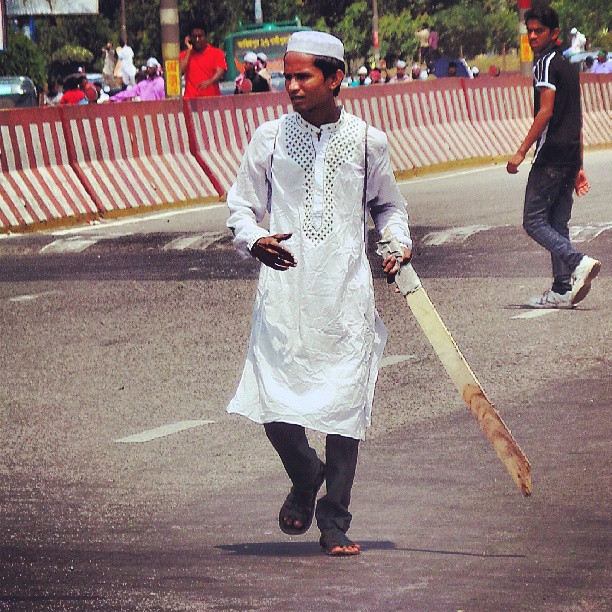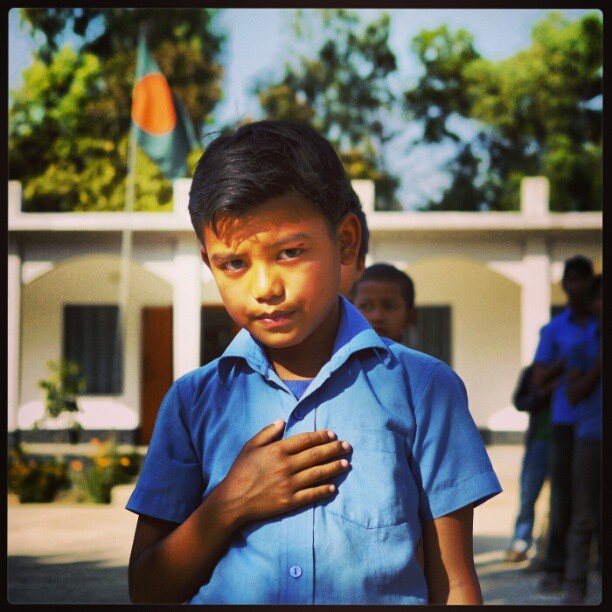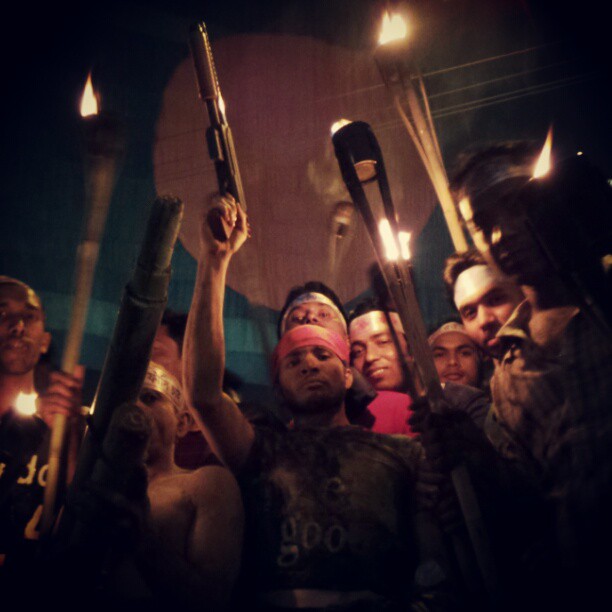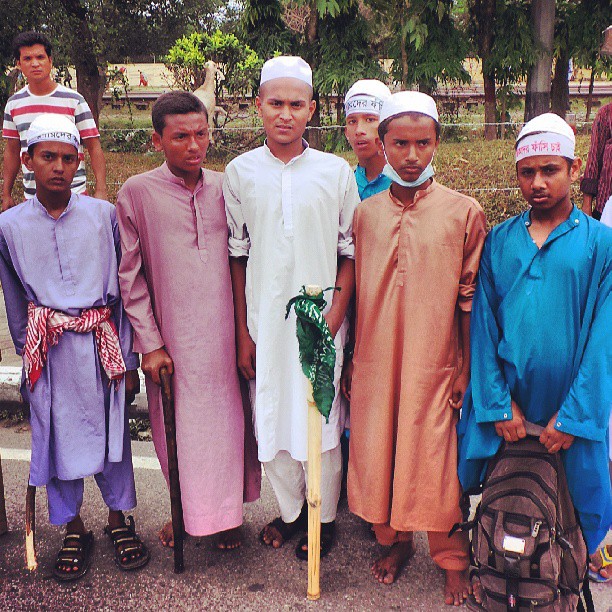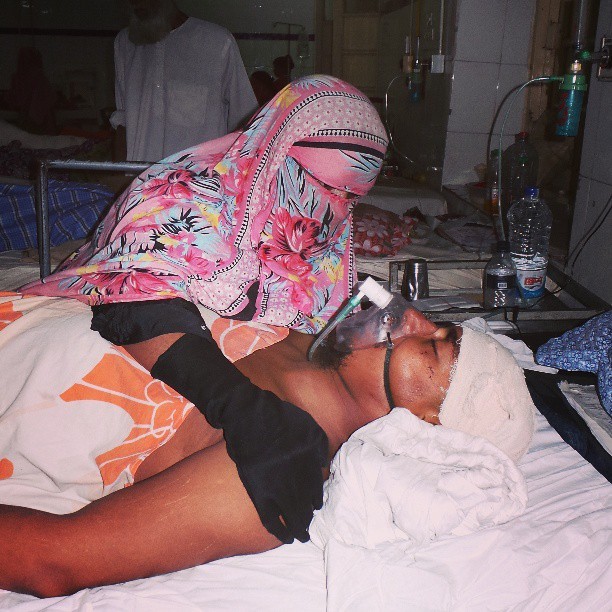
"Word has spread that you are here," said the son of one of the families hosting my stay here in Bangladesh. Up until that moment, I thought nothing could faze my host brother. In the wake of violent clashes between Muslim extremists and security forces, my host brother had come with me to document the destruction, damage, and death.
In this one afternoon, we stood inside the charmed remains of a bus, walked along the scorched ruins of a mosque's marketplace, stepped in pools of human blood surrounded by corpses and documented a man shot in the eye socket by security forces. None of these things scared him. But the fear in his eyes at this latest news was now palpable.
"We have to leave," he said. "NOW."
As my host brother and I ran down the halls of Dhaka Medical College & Hospital -- no doubt leaving little footprints made of human blood in our wake -- I realized that I had found myself caught up in the middle of a war. But this wasn't a war against jihadists, secularists, atheists, bloggers, or even war of theocracies vs. democracies.
This was Bangladesh's War on Empathy.
A War Without End
In many respects this war started long before I, and many participants of this war, were even born. Before 1971, Bangladesh existed as part of Pakistan in a region referred to as East Pakistan. However, increasing tensions between the Urdu speaking West Pakistan (now just called Pakistan) and the Bengla-speaking East Pakistan culminated in a struggle for independence. This struggle led to the creation of the country now known as Bangladesh.
However, this struggle for independence did not come easily nor did it come cleanly. Many Bangladeshis, mostly the more religiously hardline of the 90 percent Muslim population, fought against independence. As was the case even amongst my own family, it was a conflict that pitted brother against brother, fathers against sons, and left many horrible atrocities in its wake.
The Permanent Schism
The war may have been won, new borders may have been drawn, and a new flag for a new nation may have been created -- but the wounds and pain of that conflict never ended. This has led to a perpetual schism in a place that would otherwise be one of the world's most demographically, ethnically, and religiously homogenous countries.
Progressive, urban, Western-leaning, and moderate Muslims are constantly at odds with the more conservative, rural, hardline Islamist groups that still hold political, religious, and financial ties to Pakistan. With many of the hardline Islamists operating under the banner of Jamaat-e-Islami in the sphere of Bangladeshi politics, Bangladesh faces perpetual political conflict regardless of the party or leader elected to office.
For a country plagued with seasonal flooding, catastrophic cyclones, and (more recently) a devastating garment factory collapse, the tensions between these two groups have added an additional layer of perpetual instability to this country of over 150 million people. This instability escalated in recent months as the current government political party sought to, in its eyes at least, bring closure to this long-standing conflict.
Escalation Not Closure
In a highly controversial move, local courts (at the behest of the government) have been conducting War Crime trials against some of the 1971 War of Liberation's worst offenders. Amongst them includes men (virtually all hardline Islamists) who have been accused of mass murder, mass rape, and the torching and destruction of countless homes and communities.
While many of the hardline Muslim groups have questioned the legitimacy of these War Crime trials, moderate and progressive Muslims have taken umbrage at the fact that not every conviction has come with a death penalty sentence. This led to the creation of a blogger-organized protest congregating in a part of Dhaka known as Shahbag (and discussed online using #Shahbag).
Shahbag protestors chant slogans that say "light the fire" and "hang them!". They call for not only the death penalty for any and all alleged War Criminals but also for the banning of Jamaat-e-Islami and similar hardline Islamic groups from participating in democratic political life. The symbols embraced by the Shahbag group include the Bangladeshi flag and a noose -- both referencing their patriotism and their call for blood.
The Islamist Response to Shahbag
This escalation has understandably not gone unchallenged by more hardline Islamist groups. Since the formation of the Shahbag movement, Islamists have done their best to disrupt life in Bangladesh with a string of pre-planned days of violence (known as national strikes or hartals) designed to disrupt, impede, or stop daily life for Bangladeshis.
Given the online and social media roots of the Shahbag movement, hardline Islamists now see bloggers as their new enemy. As their response to Shahbag concretized, they issued a 13-point list of demands. This list includes the limiting of women in politics and in educational institutions as well as the death penalty to any blogger who criticizes Islam. The later of which many hardline Islamists have already taken upon themselves to implement and execute.
The violence of the past several days is a direct result of hardline Islamists attempting to advance this 13-point plan (with the demand for the death penalty to anyone who is blasphemous to Islam being their flagship call). This culminated in the mass congregation of over 200,000 of a hardline Islamist splinter group (known as the Hefajat) in Dhaka City to stage what was to be an allegedly peaceful protest.
In my first hand accounts of the congregation of these hardline Islamists, which I shared over YouTube, Twitter, Instagram, and Tumblr, I found there was little hope of this gathering of ever being peaceful. Every Muslim protestor who came into the city was brandishing a large stick that was yielded like a weapon. The protestors marched singing tunes calling for blood - while also chanting that those who are Muslim have nothing to fear from them.
To my surprise, many of the armed participants were teenagers - not even so much as 18 years of age. These teenagers where pulled from village madrassas and brought to the city to participate in this event. In the early stages of this demonstration, their role was to harass motorists and implement a blockade preventing the free flow of traffic in and out of the city.
But it was only when I went home in the evening that the worst began to unfold. Violent clashes between the Hefajat and security forces left Dhaka City in what most have described as a war zone. Buses and cars torched, buildings riddled like Swiss cheese, and entire marketplaces turned to ash. The dust has barely settled with all parties pointing the finger at the other for the death and destruction that occurred.
Equally startling to the on-the-ground violence and mobilization was how well mobilized hardline Islamists had become in the social media sphere. And, like #Shahbag, they had their own hashtag: #BanglaSpring. I found, every tweet I made, every public Facebook update I posted, every YouTube video I ever uploaded addressing Islamic extremism or the War Crimes trials had not gone unchallenged by those sympathetic to hardline Islam. No matter what I talked about, they had a response.
Athiest blogger hacked to death in the streets? How dare I accuse the people calling for his death of killing him! Posting a photo of armed Muslims breaking the law? I'm only calling them extremists because they dressed in Muslim attire! Islamists burn down a dozen Buddhist temples? How dare I not balance this by talking about atrocities against Muslims by Buddhists in Burma!
Misinformation and Misdirection
In the wake of the violent clashes, attempts to learn what happened first hand were an exercise in confusion and misinformation. Given Bangladesh's clamp down on international press, organizations such as BBC and CNN had to station their correspondents inside. Even Al Jazeera, still based in Bangladesh, has to issue their reports using secret unnamed and unidentified correspondents.
My confusion in trying to witness and document what had happened began before I even reached the scene. Military and police - which I had grown to respect, admire, and trust in the wake of their response to the garment factory building collapse - were nothing but intentionally unhelpful. I was given incorrect directions, given the run-around, and (on many occasions) told no one had died and no one was injured during the clashes.
Eventually, with a bit of investigation, I was able to find out which hospital the injured and dead were being taken to. However, none of the medical staff agreed to give any information as to the total number of injured or dead. Eventually medical staff and police pointed me to a blood soaked morgue and presented me with four bodies - none of whom, oddly, were dressed in clothing traditionally worn by the Hefajat or Islamists.
With silence from government officials, the only ones speaking to us were the Islamist protestors involved in the clashes. It was in the midst of their tears, their bleeding, and the look of shock and anguish on their faces that I saw them not as Islamic extremists (who would, under Sharia Law, no doubt kill me for being gay) but merely as human beings. Human beings in pain.
Though I cannot verify any of their claims, I do not question that they themselves believe what they told me to be true. One person claims he was shot at midnight - and that by the time he fell, there were already 200 dead. Another claims a victim was shot in the leg while running away - with police then dumping still alive victim in a nearby dumpster. Those that couldn't speak had their injuries on display: one shot in the head and hips while another shot straight into his left eye-socket.
Most distressing was how the lack of independently verifiable information on the death toll was leading to misinformation and rumors on both sides. One Hefajat reveled to us that rumors of 50,000 hardline Muslims were shot, killed, and dumped into a river was being shared across SMS networks and radio networks sympathetic to their cause.
No One Has the Moral High Ground
I filmed, photographed, and reported all that I could - giving clear disclaimers on stories and claims that I could not verify. I also constantly made clear that, as just one guy with a friend and no logistical support, of my limitations and being unable to fully investigate all aspects of what had occurred. My time in the hospital was cut short when a guard, sympathetic to our attempts to document all this, warned us that word had spread of our presence. So we left. Quickly.
Ultimately, however, no military came after us, no police bothered us, and no medical staff stepped in our way. Despite the misinformation, misdirection, and lack of cooperation they were, for all intents and purposes, nothing but polite and courteous. The real vitriol and the real sense of persecution didn't come from the government - but from the Shahbag movement when they learned of what I had done.
From my very first tweets and instagrams, I was labelled as an Islamist propagandist. Every testimonial and story I shared from injured Hefajat was brushed away as lies - because that's what "they" are "trained to do". I was called a NAZI and compared to Joseph Goebbels. Despite repeatedly qualifying what I could and could not confirm, I was accused of spreading lies and doing harm by even referencing the rumors being spread over SMS and radio networks.
But it didn't stop there. Everything about who I am and why I had tried to document this was criticized. I did this for fame and attention Shahbag supporters said. According to them, I did this because I want Bangladesh to become the next Afghanistan. Or I did this because I'm Jamaat. Oh I'm gay and have everything to lose if Sharia Law comes to Bangladesh? Doesn't matter - I'm one of them.
Even heartfelt person tweets and Facebook posts to friends were mocked and ridiculed. Especially in the wake of a traumatic experience involving a verbally, physically, and emotionally abusive ex-boyfriend (who eventually forced me to come out of the closet), I'd been dealing with PTSD. A tweet upon my return home about seeing corpses every time I closed my eyes was mocked. "Do you see 4 bodies or 50,000?" Shahbag supporters mockingly asked.
Even my heritage as a Bangladeshi - one whose family suffered and lost many during the 1971 conflict - was questioned. Oh I was born in Canada and not Bangladesh? As one Bangladesh PhD student at the University of Virginia tweeted to me - that means I'm not Bangladeshi. As another Bangladeshi, a PhD student at the University of Manchester mocked, "his highness" (referring to me) reported on this for "fab attention seeking".
Revenge Not Forgiveness
What was surprising is that #Shahbag supporters were clearly Western-leaning, educated, and eschewed radical Islam. But, their vitriol, hatred, and general lack of compassion to perceived enemies was no better than the Islamists. Ultimately my crime was empathy - to see this conflict not as good guys vs bad guys - but as Muslims fighting Muslims or (more accurately) humans hurting humans. I tried to humanize two sides when both were trying to demonize each other. So I became an enemy to both.
Bangladesh may be a nation spiraling into chaos and conflict but it ultimately does so with the willingness of all parties involved. Bangladesh not only lacks a Desmond Tutu-like figure - a figure who can help foster empathy, healing, truth, and reconciliation - it lacks a population willing to embrace such ideals. As one Shahbag supporter put it, "forgiveness is not for sale". Both sides call for blood. But no matter how much blood is shed - it's never enough to satisfy either side.
What is the most disheartening is that, as a Muslim (albeit a gay Muslim), I find that neither side of this conflict is embracing Islam. My faith - as I practice it - compels me to seek the truth even if that truth upsets my preconceived beliefs. It compels me to empathize with my fellow human beings - even if they are my enemy. It encourages me to pursue justice but to temper it with compassion and forgiveness.
I have seen none of this in Bangladesh. On either side of this conflict.
I may very well be a Canadian born and raised Bangladeshi, but I feel Bangladeshis have much to learn from Canada. Canada has also dealt with it's issues of violence surrounding its journey to independence. Around the same time as Bangladesh's struggle for liberation, Canadians faced the (albeit less violent) horror of the FLQ. Bangladesh may have Jamaat-e-Islami as a minor political party, but Canadians have had to deal with a political party dedicated to dividing Canada into pieces becoming so popular it became official opposition.
As a Canadian, as a Muslim, as a gay man facing cultural scorn and family rejection, and as a guy who still loves the man who was physically, verbally, and emotionally abusive to him, I've learned that more can be gained through tolerance, acceptance, empathy, and (ultimately) forgiveness. It is a harder path but it will always yield more than an endless cycle of revenge, retribution, and a hardline stance.
Bangladesh may not be the kind of country that any of its population wants but, until these lessons are learned and the War on Empathy ends, it will always be the kind of country its people deserve.
